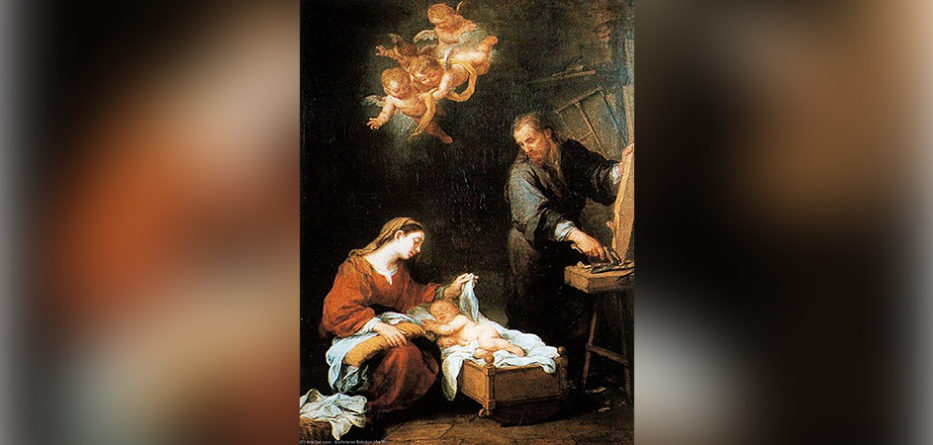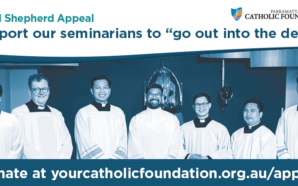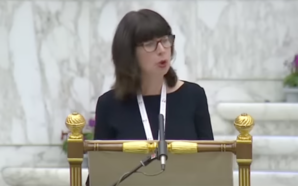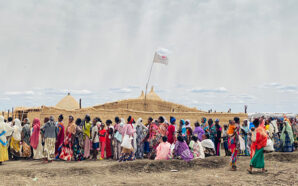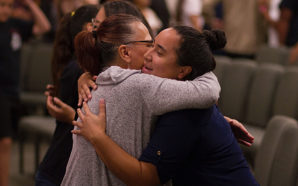The Nativity of the Lord (Christmas Day)
Readings: Isaiah 62:11–12; Psalm 96(97):1, 6, 11–12; Titus 3:4–7; Luke 2:15–20
25 December 2021
The shepherds said to one another, “Let us go to Bethlehem and see this thing that has happened which the Lord has made known to us.” – Luke 2:15
What we receive at Christmas depends on how we get to know Jesus: as a shepherd or as a disciple. In the Christmas story, the shepherds only appear at night. After this brief appearance, we never hear from them again. They don’t return to provide Mary with some basic necessities to care for her baby. They don’t return to bring Joseph and his family some food. They don’t return because they are devoted to their sheep. This commitment did not afford them many benefits. Most of the time they spent out in the cold and the heat, living with their sheep. Their work became their life.
Disciples are different. They are called to follow Jesus and they take up that invitation. Their lives are turned around and Jesus becomes the focus of their lives. The disciples’ life takes him or her to many places. One is the Temple. Jesus was very familiar with his place of worship, not because he was obliged, but to be with people of faith as one.
Jesus can be found in many places, but it’s important that we regularly meet Jesus with the rest of our family and know the peace and strength of being one. To enjoy a “happy Christmas”, we can choose to be disciples over shepherds. Instead of the warmth of wool, we will be safe in the love of Jesus. Instead of a lamb roast, we will feast on the “Lamb of God”. When we accept the call to be disciples of Jesus, we discover the fulfilment, peace and joy of Christmas, and the power to give up our angers.
Lord, help us to shed the disappointments and frustrations of Christmas to trust in your offer of peace and joy. Amen.
Fr Sean Cullen
Artwork Spotlight
Sagrada Familia (Holy Family) – Bartolome Esteban Murillo (1617–1682)
“Sagrada Familia (Holy Family)” (c. 1670–1675) Oil on canvas, 96.5 x 68 cm The Devonshire Collections, Chatsworth House.
The Christmas feast takes on a deeper meaning falling as it does within the current Year of the Family proposed by Pope Francis. In his message dated 19 March 2021, the pope recognises that modern family life faces a crisis of gigantic proportion, as does every aspect of our faith. Many current ideologies refuse to accept “givens”, and attempt to create truth as they go along—what Francis describes in his letter as “the exultation of the temporary”. If we are to believe Jesus when he says, “I am the truth,” then we must be able to find the answers to our questions in the Gospel itself.
Theology itself, of course, cannot be preached outside the context of real life. The Church must be seen with its feet on the ground, and married couples must feel that they are not alone. The Holy Father calls on us to support the family and to defend it from what compromises its beauty. We must look on its beauty with love and wonder and tenderness. This is exactly what Bartolome Murillo seems to be doing in his Sagrada Familia (Holy Family), painted between 1670–1675.
The artist, widely acclaimed in Spain in his own lifetime, but whose reputation nosedived in the late 19th century as being over sentimental and even “kitsch”, has experienced a revival in our own time, culminating in public celebrations in 2017 to commemorate the fourth centenary of his birth.
Murillo presents us here with an intimate and domestic scene, placing the characters not in the living room of the home, but in Joseph’s workshop. The subjects of the painting are thus not posed. Rather, there is a certain action. Mary has taken her sewing along with the baby to keep Joseph company as he works on a commission. The close union of Mary and Joseph can be seen in the matching tenderness they display as they look on in wonder at the mystery before them. The mystery is highlighted by the four angels playfully frolicking above. Many parents have told me of the wonder they feel when they first look on what their love has created.
But we know from the Gospels that real life was anything but cozy for the Holy Family. We meet them only in moments of crisis—Joseph’s distress faced with a pregnant fiancée; the poverty of Jesus’ birth; the flight from Herrod’s cruelty; the loss of the Boy Jesus; Mary’s distress when her family think her Son is mad; her agony as Jesus is condemned. In this sense, Jesus, Mary and Joseph are the ideal for modern times. We can approach them with confidence in any difficulty knowing that we will receive an understanding ear.
Pope Francis speaks of the Gospel as a demanding word, but only by fidelity to that word will our human relationships be set free from the slavery that threatens to disfigure them, including a fear of the future. Murillo seems to allude to this. While he gives to his painting an impression of humanity and silence, of softness and grace, a certain sadness prevails on the face of Mary as if she can see the future, and the block of wood that Joseph is carving makes us think of the cross of Calvary.
Talk of the family includes, of course, the extended family. Parents did not come out of nowhere. The Church venerates with great devotion Mary’s parents, Joachim and Anne, from them she learned how to pray. From them she inherited her strong character in making decisions. No wonder the Second Vatican Council held up the family as: “The foundation of society. In it the various generations come together and help one another to grow wiser” (Gaudium et Spes, 52). In the family, the young discover that older people have a depth of experience, a greater perspective, and an appreciation of life’s rhythms that are all part of a wisdom not to be taken lightly or ignored.
Mgr Graham Schmitzer
Fr Sean Cullen is the parish priest of Corpus Christi Catholic Parish in Mittagong-Bowral and the administrator of Holy Family Catholic Parish in Ingleburn. He was ordained in 1984 and has served in a number of parishes in the Diocese of Wollongong. Over the years, he has undertaken various diocesan roles including vocations director, master of ceremonies, chair of the Diocesan Liturgical Commission and member of the Council of Priests. He is currently the diocesan episcopal vicar for clergy.
Monsignor Graham Schmitzer recently retired as the parish priest at Immaculate Conception Parish in Unanderra, NSW. He was ordained in 1969 and has served in many parishes in the Diocese of Wollongong. He was also chancellor and secretary to Bishop William Murray for 13 years. He grew up in Port Macquarie and was educated by the Sisters of St Joseph of Lochinvar. For two years he worked for the Department of Attorney General and Justice before entering St Columba’s College, Springwood, in 1962. Fr Graham loves travelling and has visited many of the major art galleries in Europe.
With thanks to the Diocese of Wollongong who have supplied the weekly Advent and Christmas 2021 reflections from their publication, Blessed – Advent & Christmas Daily Reflections 2021.




